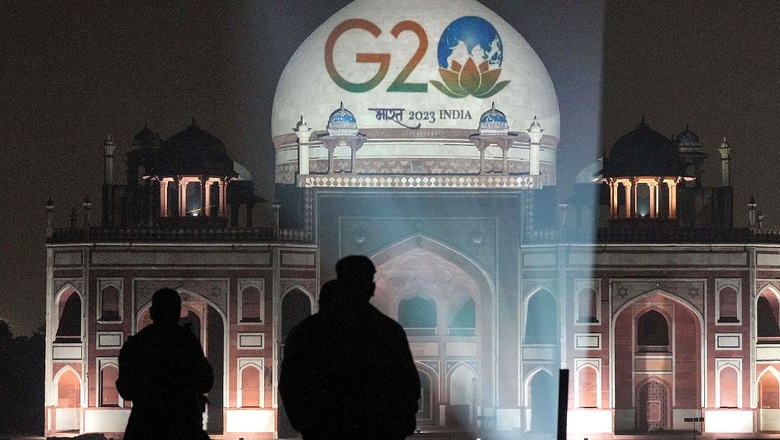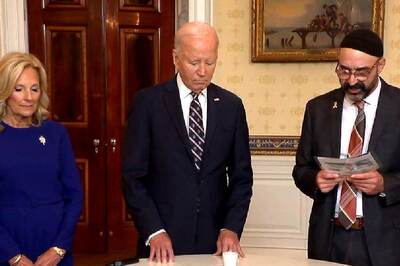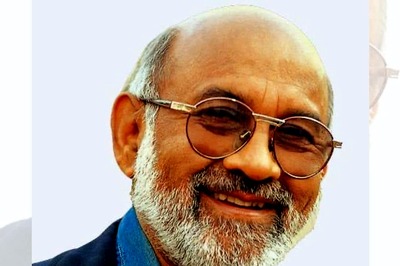
views
The G20 summit at Bali was a game changer in many ways.
India will be leading the G20 and will have many narratives, the key being an opportunity for the world to understand the perspectives of India. How does India look at the world? While yoga is one facet they are aware of, this will be more comprehensive.
Prime Minister Narendra Modi said that “the summit is not merely a diplomatic meeting”. “India takes it as a new responsibility and a sign of the world’s trust. Today, there is an unprecedented curiosity in the world to know and understand India. India is being seen in a new light. Our current successes are being assessed and unprecedented hopes are being expressed about our future.”
The logo of G20 emblem and theme were systematically designed to evolve Indian philosophy of ‘One Earth, One Family and One Future’. The lotus in the logo symbolises India’s ancient heritage, faith and thought. The philosophy of Adwait emphasises the oneness of all creatures which will be a medium of resolution of today’s conflicts. The logo and theme represent many key messages from India, from the message of Buddha for freedom from war to Mahatma Gandhi’s solutions in the face of violence.
CRISIS AND CHAOS
The PM has remarked that India’s G-20 presidency is coming at a time of crisis and chaos. He underlined that the world is dealing with the aftereffects of a disruptive global pandemic, conflicts and economic uncertainty. The PM said that even if the world is in a deep crisis, we can still progress to make it a better place. Modi said that while India maintains close relations with developed countries on the one hand, it understands and expresses the views of developing countries. As India’s vision and the common objective of bringing the whole world together for a better future, the PM gave examples of one sun, world and grid, which has been India’s clarion call for a revolution in the world of renewable energy, and the global health campaign of ‘One Earth, One Health’.
India believes that the international organizations have failed badly. PM Modi said that the UN has been unable to resolve the chaos and subtly hinted that the UN has failed in upholding its mandate. He added that all nations have failed to reform the UN. “There is a crisis of essentials all over the world. The challenge for the poor in every country is more severe. They do not have the financial capacity to deal with the double whammy.”
PM Modi argued that due to the UN’s failure, the G20 has become an even more important multilateral forum.
WESTERN DOMINANCE
India occupies the largest area of the South Asian continent, surrounded by the Himalayan mountain ranges to the north and the Indian Ocean to the south. Located at the intersection of the trade routes between South Asia, Central Asia and the Middle East, ancient Indian kingdoms and empires maintained cultural and economic relations with Mesopotamia, Greece, China and Rome. With the exception of the Chola dynasty (300 BC-AD 1300), which built an overseas empire, Indian armies did not seek conquest of lands outside the subcontinent. Kings could conquer territory from neighboring kings within India, but annexing other cultures or peoples was deemed unethical.
India’s five millennia as a civilisation have always involved engagement with the outside world. From the earliest times, Indian kingdoms and emirs maintained ties with other countries and regions.
Kishore Mahubani, an expert of international politics from Singapore, called the western dominance for two centuries a historical aberration. It means the East has all the resources to be the driving power behind world politics. Quincy Wright, a western philosopher, said that the Indian perspectives on world politics are much better and deeper. But theories of Kautilya and Manu remained confined to the few pages of Indian political thought as the comprehensive understanding was never elaborated upon.
VISHWA GURU
Indian perspective is very straight forward. The concept of Vishwa Guru is not about coercion, force or economic embargo. Indian philosophy has displayed the concept of peace and prosperity. Indian influence in the South East Asia is well-known. But the Hindu culture never tampered with or changed the social order of the respective states. Indian influence spanned across the Middle-East and Africa. The British colonial power used the historical links of India to acquire the land of the Middle-Eastern countries.
In a conversation with Churchill during World War II, General Claude Auchinleck stated that “India is vital to our existence. We could still hold India without the Middle East, but we cannot hold the Middle East without India”.
India as the springboard for security of the regions to its west and east had resulted in a British project, beginning in the eighteenth century, to create closer ties between the Persian Gulf and India.
MESSAGE OF PEACE
The whole world is one. There is a need to share and rejoice. Your miseries are my pain. None of the western theories of world politics explained these components, be it realist or idealist or English school of thought or post-modernist. China as a power is toeing the western lines. Its OBR has displayed the imperial approach of the west. In the name of connecting the world, it is creating naval military bases in the Indian Ocean. It is dividing the world for own economic benefits.
There are many strategic thinkers of modern times who explained how independent India lost the opportunities to be a great power. India could have been a great power, had it retained and maintained the British India edge in the Far-East and Middle-East.
Indian strategic thinker Pannikar explained his view, “The old Indian empire as a common defense had much in its favour.”
In his 1943 book ‘The Future of South East Asia’, Pannikar argued that in history, India had been the only power able to control South East Asia or what he called ‘Further India’. Pannikar saw India as the security provider as well as the key economic power for the region because of its geographical position, size, and resources.
Another Indian strategic thinker prof PN Kirpal, wrote in 1945, “Three great highways connect India with the rest of the world. One was from Calcutta towards the South and South East; the sea routes reach Australia and New Zealand…”
The world has seen several disruptions in the past 12 months. The reemergence of Taliban in Afghanistan, Russia-Ukraine war, Taiwan-China tensions and many more created fault lines in world politics. India calls for peace initiatives and dialogues. The Buddha, not Yudh, is the solution, the PM and foreign minister has said from different international fora.
G20 will showcase that economic activities flow more smoothly through the cultural channels. It has sanity and serenity. China is in an aggressive mood on the western lines, carrying the same ideas of force and deceit. But will the world allow China to be a superpower?
Satish Kumar is Professor, Political Science, IGNOU, New Delhi. Views expressed are personal and do not represent the stand of this publication.
Read all the Latest Opinions here


















Comments
0 comment